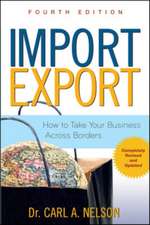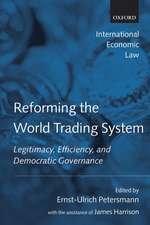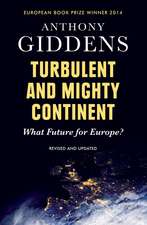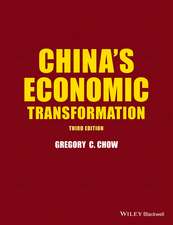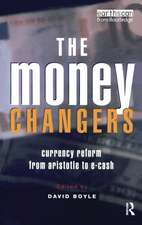Integrated Macro-Micro-Modelling Under Rational Expectations: With an Application to Tariff Reform in Australia: Contributions to Economics
Autor Michael Malakellisen Limba Engleză Paperback – 17 feb 2000
Din seria Contributions to Economics
- 18%
 Preț: 1001.81 lei
Preț: 1001.81 lei -
 Preț: 90.83 lei
Preț: 90.83 lei - 15%
 Preț: 649.06 lei
Preț: 649.06 lei - 18%
 Preț: 1109.92 lei
Preț: 1109.92 lei - 24%
 Preț: 657.09 lei
Preț: 657.09 lei - 18%
 Preț: 976.54 lei
Preț: 976.54 lei - 17%
 Preț: 361.03 lei
Preț: 361.03 lei - 18%
 Preț: 1027.83 lei
Preț: 1027.83 lei -
 Preț: 283.93 lei
Preț: 283.93 lei - 15%
 Preț: 644.95 lei
Preț: 644.95 lei - 15%
 Preț: 638.24 lei
Preț: 638.24 lei -
 Preț: 394.29 lei
Preț: 394.29 lei - 15%
 Preț: 636.80 lei
Preț: 636.80 lei - 15%
 Preț: 637.78 lei
Preț: 637.78 lei - 18%
 Preț: 723.69 lei
Preț: 723.69 lei - 15%
 Preț: 635.47 lei
Preț: 635.47 lei - 15%
 Preț: 634.00 lei
Preț: 634.00 lei -
 Preț: 392.75 lei
Preț: 392.75 lei -
 Preț: 383.33 lei
Preț: 383.33 lei - 15%
 Preț: 637.28 lei
Preț: 637.28 lei - 15%
 Preț: 636.80 lei
Preț: 636.80 lei - 18%
 Preț: 950.96 lei
Preț: 950.96 lei - 15%
 Preț: 634.68 lei
Preț: 634.68 lei -
 Preț: 387.38 lei
Preț: 387.38 lei - 15%
 Preț: 647.27 lei
Preț: 647.27 lei - 15%
 Preț: 636.63 lei
Preț: 636.63 lei - 15%
 Preț: 639.73 lei
Preț: 639.73 lei -
 Preț: 385.62 lei
Preț: 385.62 lei - 15%
 Preț: 641.85 lei
Preț: 641.85 lei - 20%
 Preț: 649.60 lei
Preț: 649.60 lei - 15%
 Preț: 641.71 lei
Preț: 641.71 lei -
 Preț: 387.96 lei
Preț: 387.96 lei - 15%
 Preț: 645.47 lei
Preț: 645.47 lei -
 Preț: 385.08 lei
Preț: 385.08 lei - 15%
 Preț: 646.62 lei
Preț: 646.62 lei -
 Preț: 383.33 lei
Preț: 383.33 lei - 15%
 Preț: 638.43 lei
Preț: 638.43 lei -
 Preț: 381.21 lei
Preț: 381.21 lei - 15%
 Preț: 642.51 lei
Preț: 642.51 lei - 15%
 Preț: 637.78 lei
Preț: 637.78 lei - 15%
 Preț: 641.71 lei
Preț: 641.71 lei -
 Preț: 384.70 lei
Preț: 384.70 lei -
 Preț: 379.86 lei
Preț: 379.86 lei -
 Preț: 378.34 lei
Preț: 378.34 lei -
 Preț: 384.70 lei
Preț: 384.70 lei -
 Preț: 388.52 lei
Preț: 388.52 lei - 15%
 Preț: 641.71 lei
Preț: 641.71 lei -
 Preț: 381.00 lei
Preț: 381.00 lei - 15%
 Preț: 644.95 lei
Preț: 644.95 lei -
 Preț: 386.00 lei
Preț: 386.00 lei
Preț: 388.34 lei
Nou
Puncte Express: 583
Preț estimativ în valută:
74.31€ • 79.46$ • 61.96£
74.31€ • 79.46$ • 61.96£
Carte tipărită la comandă
Livrare economică 18 aprilie-02 mai
Preluare comenzi: 021 569.72.76
Specificații
ISBN-13: 9783790812749
ISBN-10: 3790812749
Pagini: 296
Ilustrații: XIV, 280 p. 35 illus.
Dimensiuni: 155 x 235 x 16 mm
Greutate: 0.42 kg
Ediția:Softcover reprint of the original 1st ed. 2000
Editura: Physica-Verlag HD
Colecția Physica
Seria Contributions to Economics
Locul publicării:Heidelberg, Germany
ISBN-10: 3790812749
Pagini: 296
Ilustrații: XIV, 280 p. 35 illus.
Dimensiuni: 155 x 235 x 16 mm
Greutate: 0.42 kg
Ediția:Softcover reprint of the original 1st ed. 2000
Editura: Physica-Verlag HD
Colecția Physica
Seria Contributions to Economics
Locul publicării:Heidelberg, Germany
Public țintă
ResearchCuprins
1 Introduction: Scope and Purpose.- 1.1 Introduction.- 1.2 State of the Art.- 1.3 Contributions of this Book.- 1.4 Organisation of the Remainder of this Book.- 2 An Overview of Orani-Int.- 2.1 Introduction.- 2.2 Nomenclature for Intertemporal Modelling.- 2.3 The Structure of ORANI-INT.- 2.4 Chapter Summary.- 3 The Theoretical Structure of Orani-Int.- 3.1 Introduction.- 3.2 Industry Behaviour.- 3.3 Final Demands.- 3.4 Zero Pure Profits Conditions.- 3.5 Market Clearing Conditions.- 3.6 Miscellaneous Equations.- 3.7 Chapter Summary.- Appendix A3.1 The Log-Linear form of the Orani-Int Equation System.- Appendix A3.3 Alternative Investment Specifications.- Appendix A3.4 The Implications of the Irreversibility Constraint on Investment.- Appendix A3.5 A Note on Divisia Indexes.- 4 Solution Method.- 4.1 Introduction.- 4.2 Alternative Solution Methods.- 4.3 The ORANI-INT Solution Algorithm.- 4.4 Modelling Sign Constraints.- 4.5 Chapter Summary.- 5 Generating the Control Path Solution.- 5.1 Introduction.- 5.2 Constructing an Intertemporal Base Solution.- 5.3 The Control Scenarios.- 5.4 Chapter Summary.- Appendix A5.1 The ORani- 13 Database.- 6 Orani-Int’s Simulation Properties with and without Forward-Looking Behaviour.- 6.1 Introduction.- 6.2 An Overview of the Illustrative Experiments.- 6.3 Interpretation of Results.- 6.4 The Benchmark Experiment.- 6.5 The Investment Experiment.- 6.6 The Consumption Experiment.- 6.7 The Full Intertemporal Experiment.- 6.8 The Surprise Experiment.- 6.9 Chapter Summary.- 7 Should Tariff Reductions Be Announced?.- 7.1 Introduction.- 7.2 Simulating the Tariff Reduction Strategies.- 7.3. Simulation Results.- 7.4. Summary and Conclusions.- 8 Summary and Conclusions.- 8.1 Introduction.- 8.2 Model Development.- 8.3 Applications.- 8.4 An Agenda forFuture Research.- 8.5 Final Comments.- References.- Author Index.- List of Tables.- List of Figures.

